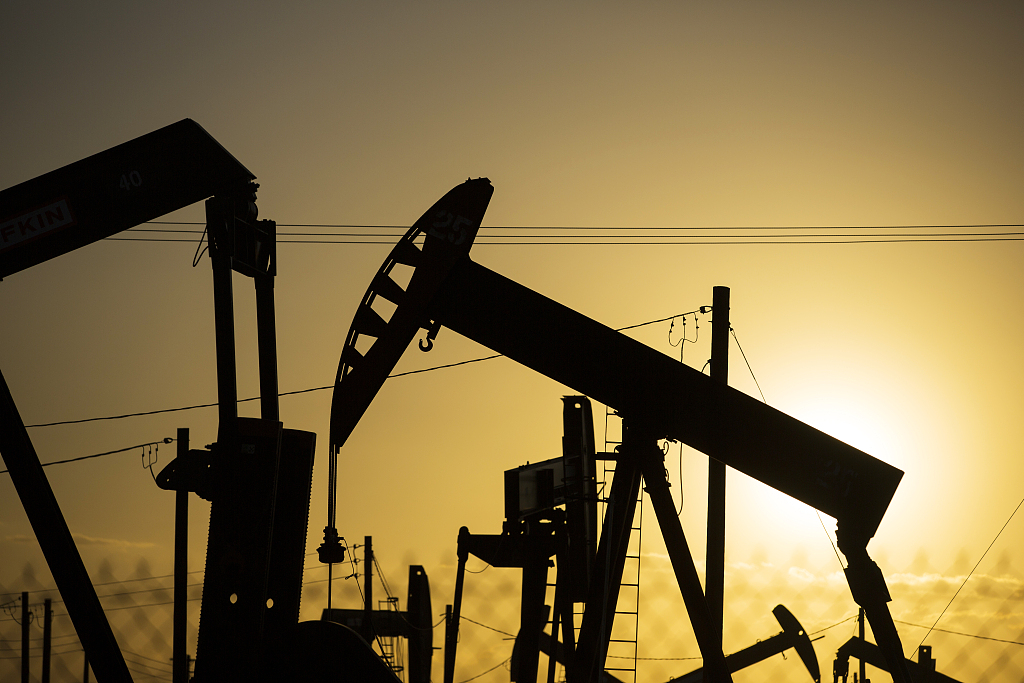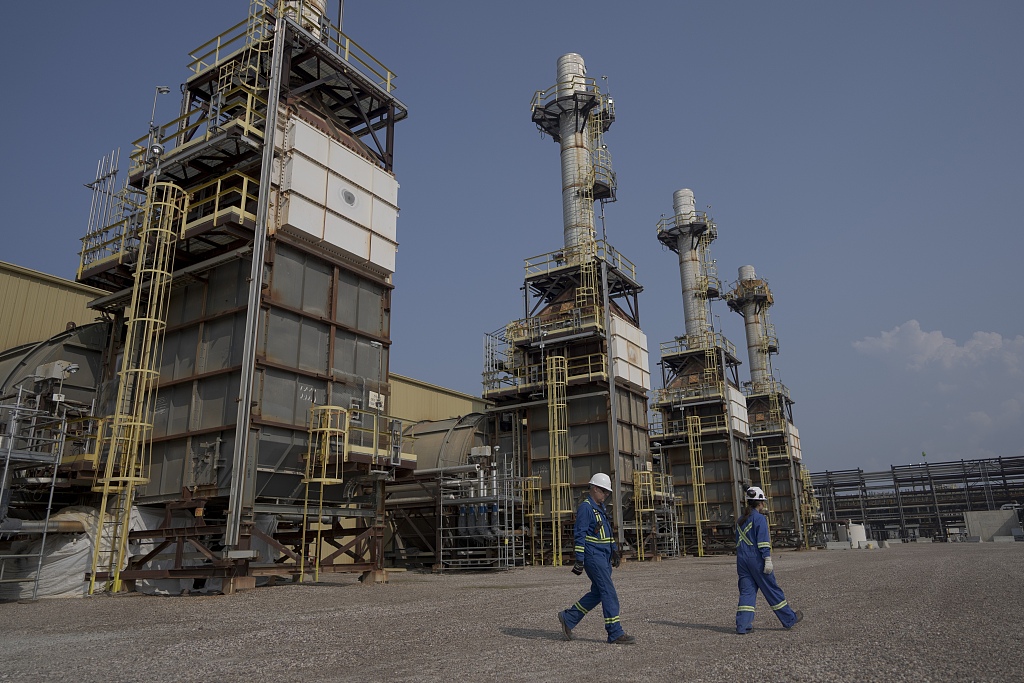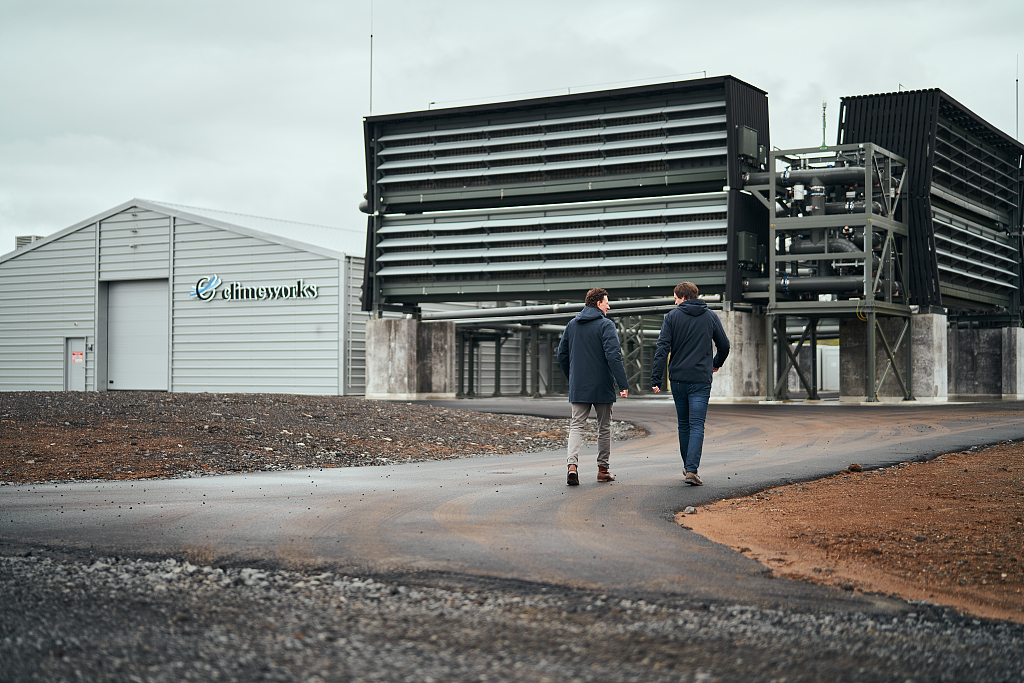Fossil fuels have long been a contentious issue in global climate talks. With COP28 – the annual global climate conference – nearing, the EU member states have agreed on a negotiating position, pushing for a world-first deal to phase out "unabated" fossil fuels around the world by 2050.
As defined by the Intergovernmental Panel on Climate Change (IPCC), "unabated" fossil fuels are produced and used without interventions, such as carbon capture and storage (CCS) technology, that trap the carbon emissions and store them safely underground.
Instead of endorsing the phasing out of all fossil fuels backed by the wealthier member countries including Denmark, France and Germany, the proposal accommodated opposition from other member states with fossil fuel-heavy economies in a compromise, leaving a window for them to keep burning coal, gas and oil if they use CCS to abate the resulting emissions.
"Allowing only 'abated' fossil fuels partly levels the playing field between renewables and fossil fuels, which is still benefiting fossil fuels," said IPCC coordinating lead author Heleen de Coninck, professor of Socio-Technical Innovation and Climate Change at the Eindhoven University of Technology.

Oil extraction machine at an oil field in California, the U.S. /CFP
Oil extraction machine at an oil field in California, the U.S. /CFP
Controversy over vague definitions
Since the EU hasn't provided a clear definition of exactly how much emission reduction through CCS qualifies as "abated," many believe that it will allow this technology to be used as a cover to avoid phasing out fossil fuels.
Despite current lack of clarity, the word "unabated" features prominently in climate commitments.
At COP26 in Glasgow in 2021, the call to speed up efforts towards the phasing down of "unabated" coal power was considered a big breakthrough, and now attention has also shifted, with an emphasis on "unabated" oil and gas.
At April's G7 Summit, leaders agreed to accelerate the phase-out of "unabated" fossil fuels with the goal of achieving net zero in the power sector by 2050.
However, the governments have not provided a clear explanation of what they really mean.
Uncertainties shroud CCS
CCS is widely regarded as an indispensable technology for achieving emission reduction targets, however, its development has been relatively slow despite decades of research and billions invested.
Currently, the cost of CCS remains high and varied due to high design complexity and need for customization, according to a recent report by the International Institute for Sustainable Development (IISD).
While the overall CCS process is expected to be standardized, some components will need to be tailored to specific applications, geological conditions, and local supply chains, indicating a need for customization.
The report focuses on carbon capture in the context of Canada's oil and gas industry. As one of the countries with advanced CCS technology, there are seven commercial CCS projects currently operating there, capturing 0.05 percent of national emissions. Current costs of CCS projects tend to run in the upper range of the predicted costs from $20 to $110 per tonne of carbon dioxide (CO₂) in different phases, such as liquified or in supercritical condition. For example, the Quest project near Edmonton, Alberta, which captures CO₂ for use in upgrading oil sands, costs around $147 per tonne of CO₂ up to 2021.
The report explains that, typically, the cost of a technology starts to drop as it reaches commercial maturity. However, as the technology of CCS is too complex, and demands too much customization with each application, CCS is not yet widely deployed and there are limited opportunities for learning by doing, which present obstacles to technological advancement.

Two staff walk by steam-producing towers at Cenovus' Sunrise oil facility northeast of Fort McMurray, Canada, August 31, 2023. /CFP
Two staff walk by steam-producing towers at Cenovus' Sunrise oil facility northeast of Fort McMurray, Canada, August 31, 2023. /CFP
Usually, gas is captured at one location and transported in very large quantities to a designated storage site deeply underground or under the seafloor. As the high-concentrated CO₂ moves through the pipeline, large-scale releases could happen. The gas could also escape from the seabed due to pressure or geological factors. The safety issues in the stages of CO₂ transportation and storage remain unsolved.
In 2020, a buried pipeline transporting liquefied CO₂ ruptured near Sataritia, a village in the U.S. Nearly 200 residents were evacuated and 45 were hospitalized. The investigation report shows the pipeline was bent in the sinking soil after the heavy rain.
Two Norwegian CCS projects – the Snøhvit and Sleipner subsea fields – call into question the long-term viability of carbon storage.
Within 18 months of Snøhvit's operation, the target storage area proved unable to take the projected amount of CO₂ and new storage areas were needed. In the case of Sleipner, the injected CO₂ unexpectedly moved into another rock layer.
Global Status and future of CCS
According to the International Energy Agency's (IEA) Net-Zero Roadmap, globally around 7.6 gigatonnes of CO₂ will need to be captured per year by 2050 to limit warming to below 1.5 degrees Celsius.
DNV, an independent organization in assurance and risk management, estimates in its report that by 2050, CCS will account for only about 2.2 gigatonnes of CO₂ per year, which is 70 percent lower than the IEA's requirement.
As of July 2023, there were only 41 CCS projects in operation worldwide, including the leading countries – the U.S. and Canada, and countries in advancement, such as UK, China and Norway, with the ability to capture about 49 million tonnes of CO₂ per year, which is equal to about 0.1 percent of global carbon emissions, according to the latest report released by the Global CCS Institute.
"Academic, industrial and governmental variables make it hard to estimate the progress that might take place by 2050," said Stefan Adrian Nastase, postdoctoral research fellow at KAUST Catalysis Center.
A report released by the Institute for Energy Economics and Financial Analysis (IEEFA) in 2022 said that carbon capture would not be deployed significantly until the 2030s and should not be relied upon to reach climate goals.
De Coninck noted that if CCS is to play a significant role in meeting the goals of the Paris Agreement, the issues, including "cost barriers, lack of policy incentives, capacity, public resistance and legal and regulatory barriers," must be addressed. She also expected it to mainly be implemented in large-scale industry and retrofitting fossil power plants.
According to the Global CCS Institute, CCS will be utilized in hard-to-abate industries including cement, steel, fertilizer and chemical sectors.
Although CCS has been considered an immature and risky distraction from other decarbonization routes, scientists at IPCC and IEA recognized its important role in reaching net-zero by 2050, and there has been a surge of interest in CCS in recent years.
"It is already making a difference," said de Coninck.

World's first large-scale carbon dioxide removal plant ran by Climeworks in Iceland, September 15, 2021. /CFP
World's first large-scale carbon dioxide removal plant ran by Climeworks in Iceland, September 15, 2021. /CFP
Currently, China is making great strides in this technology, with 11 projects in operation. In June 2023, a mega carbon capture, utilization and storage (CCUS) facility was put into use, which can capture 500,000 tonnes of CO₂ every year. It is Asia's largest CCUS project for the coal-fired power generation sector.
"In terms of research and industry, China has managed to be at the forefront in a very short time and has equal chance as anybody to become a leading developer of CCUS technologies," said Nastase.
Stricter definition of 'abated' fossil fuels
Back to fossil fuels, the most generally accepted definition of "unabated" fossil fuels can be found in the footnotes of the IPCC sixth synthesis report.
The report says abatement should "substantially reduce" greenhouse gas emissions. It mentions "for example, capturing 90 percent or more carbon dioxide from power plants, or 50 to 80 percent of fugitive methane emissions from energy supply."
Scientists are now working on an adaptable and strict definition.
In a recent paper by de Coninck, she offered suggestions for a clear benchmark that the term, "abated" fossil fuels should only be used when fossil fuel emissions are reduced by at least 90 to 95 percent with the use of CCS. At the same time, the leaks of methane should be limited to 0.5 percent of equivalent natural gas production.
"The percentage captured to qualify as 'abated' will need to be reviewed with time and should increase as the technology is demonstrated and commercialized, and as carbon restrictions tighten," she noted in the paper.
For more
COP28: What we need to know about the first global stocktake
Key issues on the COP28 negotiating table
(If you have specific expertise and want to contribute, or if you have a topic of interest that you'd like to share with us, please email us at nature@cgtn.com.)




